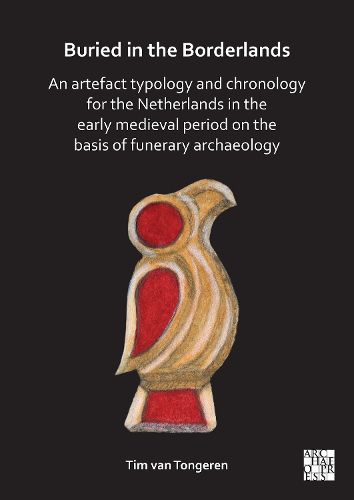Readings Newsletter
Become a Readings Member to make your shopping experience even easier.
Sign in or sign up for free!
You’re not far away from qualifying for FREE standard shipping within Australia
You’ve qualified for FREE standard shipping within Australia
The cart is loading…






Buried in the Borderlands is the result of a large-scale yet detailed study of early medieval grave furnishings from the Netherlands, aiming at the creation of a comprehensive artefact typology and updated relative chronology for this under-explored period in the Low Countries. During the early medieval period, the present-day Netherlands occupied a unique position as a border zone between the Frisians, Saxons and Merovingian Franks. For this large-scale research, grave goods were analysed from approximately 2500 inhumations from 21 cemeteries distributed across the country and incorporating the material culture of the aforementioned peoples. The resulting database was studied using the statistical research method Correspondence Analysis. A date was generated for individual artefact types and grave contexts. Creating the finds database confirmed that the varied Dutch material culture of the early medieval period cannot be analysed by only using a German or French typology. To simplify and locally embed future research as well as to allow for international comparison, a holistic typology has been developed which includes artefact types with roots in Germany, France and the surrounding countries as well as locally produced objects. All artefact types are provided with a revised date based on Dutch find contexts.
$9.00 standard shipping within Australia
FREE standard shipping within Australia for orders over $100.00
Express & International shipping calculated at checkout
Buried in the Borderlands is the result of a large-scale yet detailed study of early medieval grave furnishings from the Netherlands, aiming at the creation of a comprehensive artefact typology and updated relative chronology for this under-explored period in the Low Countries. During the early medieval period, the present-day Netherlands occupied a unique position as a border zone between the Frisians, Saxons and Merovingian Franks. For this large-scale research, grave goods were analysed from approximately 2500 inhumations from 21 cemeteries distributed across the country and incorporating the material culture of the aforementioned peoples. The resulting database was studied using the statistical research method Correspondence Analysis. A date was generated for individual artefact types and grave contexts. Creating the finds database confirmed that the varied Dutch material culture of the early medieval period cannot be analysed by only using a German or French typology. To simplify and locally embed future research as well as to allow for international comparison, a holistic typology has been developed which includes artefact types with roots in Germany, France and the surrounding countries as well as locally produced objects. All artefact types are provided with a revised date based on Dutch find contexts.